Emotional competence
includes understanding what we are feeling and why we are feeling it, as well
as appreciating how others may be feeling and the impact of our actions on
them. It also includes responding to our feelings and expressing them
appropriately – and, when the feelings are strong or difficult to manage, in
ways that help us calm down and feel better.(He Māpuna Te Tamaiti, 2019).
Emotional literacy is
made up of 'the ability to understand emotions, the ability to listen to
others constructively and the ability to express emotions productively. To
be emotionally literate is to be able to handle emotions in a way that improves
your personal power and improves the quality of life around you. Emotional
literacy improves relationships, creates loving possibilities between people,
makes co-operative work possible, and facilitates a feeling of community.
Emotional Literacy
At Mairtown kindergarten we have been looking at emotional literacy in its most simple forms, the skills of knowing what emotions are, being able to name them and recognizing them in others and ourselves.
Throughout this year we have
had a huge focus on this at kindergarten.
We set up an activity to
support this learning. This involved rotating a selection of picture cards with faces expressing emotions on a table, along with mirrors and
loose parts. Kaiako were available to share korero with tamariki whenever they took
an interest or engaged with this activity.
Kaiako would ask “how do
you think these children feel?”. And “how do you calm your body, if you’re
feeling like this”? And “What do you do when you are feeling like this”?
Some of the responses we
got were:
"This one has
dribbles coming down his eyes" Laken.
“Na I'm ok I can just
calm myself down, I don't need any help”. Leo.
“When Mum does funny
things, that makes me happy. Cuddles make me happy. Bites, itchy bite cream, if
we don't have any that makes me sad." Millen.
"I can pull a big angry face watch me". Laken.
Talking and learning with tamariki about the emotions that go on inside their bodies is a great way to build their understanding of them. This knowledge allows tamariki to be able to name them and understand their experience of them. This also supports children to first recognize them and then know
that this emotion will pass by and then they will return to a state of calm again.
Learning about emotions also assists tamariki to recognize different emotions in others and allows opportunities to practice responding to them effectively.
Safe, stable and
responsive environments support the development of self-worth, identity,
confidence and enjoyment, together with emotional regulation and self-control. (Te
Whāriki, 2017).
As a team we discussed resources
that could support our tamariki with Emotional Literacy and mindfulness practices.
After research and investigation, we purchased two Lycra sensory swings. These swings improve motor coordination, strength, and praxis. Therapeutic
swings offer vestibular stimulation to individuals with sensory processing
disorders and other special needs. The back-and-forth motion helps calm
overstimulated tamariki, improves balance, and develops important motor skills.
Everyone has been having
an amazing time, spending time exploring how their bodies respond to this new resource. Some
questions were asked around how the children feel when they are in the lycra
swing.
"I feel a bit
relaxed and calm". Kianu
"Calm is the wind,
calm like the wind". Jackson.
“I just feel soo relaxed
and calm". Laken
“Just count to 5 or 6 and
I’m calm here". Lennox.
"Eat some chocolate
sometimes to feel calm”. Maxwell
For children, talking
about and understanding their emotions is the first step in understanding
different feelings, knowing that these are ok, and taking positive next steps. This is a life long skill that will
be so important later in life.
Using Mindfulness in
daily lives can help children to become more aware of their thoughts and
feelings, and help them to respond to trauma, conflict or irritation in a calmer
manner, thus improving the quality of their lives, (Whitehead, n.d).
Puppets
Another way we built upon the emotional literacy of tamariki, was the incorporation of puppets into our programme
and environment. We started this off by Kaiako role modelling the use of puppets to tell stories about situations that may arise at kindergarten and play out potential next steps, with a big emphasis
on emotional responses and feelings.
Puppets are a useful tool
for supporting children’s prosocial development. Using puppets allows children
to solve social problems without having to manage the emotions that can arise
from peer conflict (He Māpuna Te Tamaiti, 2019).
Tamariki also had the opportunity
to make their own puppets and use them in their own puppet shows, or use the ones that
were available.
Through this learning tamariki are developing social skills that enable them to establish and
maintain friendships and participate reciprocally in whanaungatanga
relationships (Te Whāriki, 2017).
Yoga
Another activity we have
been exploring with at Mairtown Kindergarten has been Yoga.
“Yoga helps children
manage their anxiety. It improves children’s emotional regulation and boosts their self-esteem. Yoga increases children’s body awareness and
mindfulness, It enhances children’s concentration and memory. Yoga develops
children’s strength and flexibility”. (Seedling Yoga, 2019).
The beauty of yoga at
Kindergarten is that it can be done anywhere by anyone. We have been doing yoga
outside, under a tree, on the mat and with the support of Cosmic Kinds Yoga. We
find a place to lie down wherever we feel is right at the time. We all
practiced some breathing together to slow down and focus our attention. We then
go around the circle picking a pose that we like and everyone copies that
person.
Allowing tamariki to
pick their own move allows them to have ownership over the experience. Tamariki feel empowered, as they have the opportunity to contribute to running our programme and leading the experience in
their own way, practicing taking ownership of a situation.
When the session is
coming to an end, we lay down, close our eyes and listen, asking “Can you tell me what
you hear?" We then move onto prompting them to consider what they can see, feel, smell and taste.
This is a great opportunity to think about what is going on inside their bodies
and just take time out to be in the moment. It also helps them to understand
different emotions and feelings that they have, acknowledging them and letting them pass on
through. Only by practising being present and calm can tamariki learn how to
take their bodies to that state.
Deep breathing and using our senses to see the world are both great mindfulness techniques. They are great skills to practice and can become important later, when you find yourself in a state of heightened emotion. This leads into self-regulation and this is a skill everyone needs.
“Both social emotional teaching and mindfulness practises can support tamariki to develop mindfulness capabilities and social emotional competencies that result in a positive outcome now and in the future”. (Waters,M.B., Thompson, K., Hosie, T., Bargh, K., Berry, S., McLaughlin & Wray,L, n.d).
With
the support of information from the Ministry Document, Te Māpuna Te Tamaiti, there has been a
big change to teaching and learning at Mairtown Kindergarten this year.
Teachers are able to name and describe the teaching strategies they are using
to support tamariki develop and strengthen their social emotional competency. Throughout this learning, tamariki are able to make connections to how they are feeling and the feelings of
others. Tamariki have become more aware of the implications of their actions
and the effects of those actions on the feeling of others. We are now hearing them using emotional literacy vocabulary with Kaiako, whānau and through
interaction at kindergaren. Tamariki are now more able to respond instinctively to what is seen,
heard or felt.
































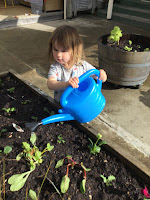






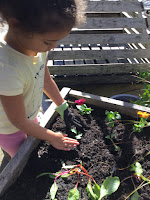





























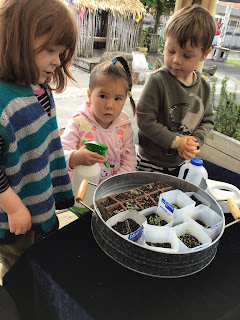




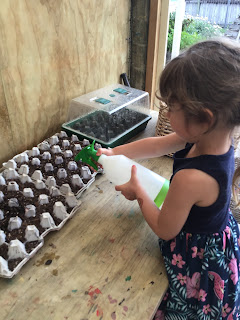


























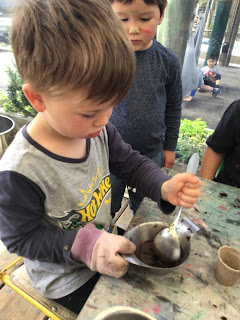










.JPG)










